Villa of the Daimyo
by Kazuo Uehara, a local editor
Photo credits: Shinichi Kubota
Most wars ended at the beginning of the Edo period. In 1639, the daimyo (feudal lord) Matsudaira Totoumi-no-kami Naochika of liyama Castle took up his reign as the local ruler. A servant of the Matsudaira family, Oguri Kichiji, came to Nozawa in 1645, and started living in a house in front of Oyu. He noticed secretly that Yakushi Nyorai (Healing Buddha) was treated with respect in this house, and suggested having onsen visitors also pay reverence to the Buddha. So, he created a hokora (small shrine) near Oyu. In 1674, Naochika ordered Asegami Gozaemon from that house to protect Yakushi-do (hall of the Physician of Souls) for generations to come.

In 1691, the building of a villa for the daimyo near Oyu began, so the Yakushido was moved to the territory next to Kenmeiji Temple, where it has remained until now.
In 1706, Matsudaira moved to Kakegawa in Shizuoka Prefecture, so the land of his former residence was returned to the village.
Building the Yakushido and the daimyo's villa resulted in good publicity for Nozawaonsen as an onsen healing resort that "must be great if used by the daimyo," and "has water blessed by the Yakushi with the power to heal illnesses and wounds."
Via Mountain Passes to the Healing Onsen
Around this time, people from neighboring villages started coming to Nozawaonsen. Visitors came from Joetsu City in Niigata Prefecture via the Sekita Pass toward Iiyama, bringing goods such as salt and rice. A bansho, or guardhouse, was located along this path, watching out for women and baggage passing through. The bansho‘s records show that the women of Echigo(Niigata Prefecture) travelled to Nozawa for the onsen.
Onsen guests also came from the Tokamachi and Chūetsu, via the path along the Chikuma River that crossed over the Torogi Pass from Shikumi.
Onsen Managed by Bath Partners
During this period, villagers living near the onsens managed them, making a smell shed for the roten-buro or open-air bath, cleaning, providing lighting, and arranging everything to make the bath more pleasant to use.
In the Edo period, villagers lived with relatives, helping each other with farming, family ceremonies and other everyday matters. In addition to these responsibilities, villagers of Nozawa formed a group called “bath partners” (yu-nakama) with neighbors of the closest onsen. “Bath partners” had a strong bond through their shared management of the onsen. The “bath partners” customs live on to this day.
Growth of Onsen Visitors
The latter part of the Edo period saw more people travelling to visit temples and to seek onsen cures. In 1771, the Nakano magistrate's office ordered business taxes to be paid on profits from the onsens. People were against this because the onsens did not bring the village any profit, other onsens were not paying such tax, and there had been no such orders before. However, when faced with the choice of paying taxes or closing the onsens, the village decided to pay.

According to a petition against the tax raise in 1776, the charge for visitors who brought rice or miso and stayed overnight, was 16 mon. On average, the number of visitors was around 130 in March and April, 240 in June and July, and 200 in August and September. There were no visitors staying overnight in the months of May and October due to the busy farming season, as well as from November through February due to heavy snowfall. While a total of 570 customers brought some income in one year, the profit was minimal after subtracting the costs of tableware and linen, and oil for onsen lighting. Expenditures also included roof, rope and wood maintenance, changing the floors due to damage caused by the onsen steam, replacing the bathtub and planking, and rebuilding the onsen building itself. Villagers made the argument that the onsen did not bring them any profit as all these costs were covered using their own earnings from working on the mountains and such.
Nevertheless, the number of visitors continued to increase, and in 1838 Oyu was renovated.
After discussion among the bath partners, maintenance was carried out on the onsen source, and the shed and bathtub were renewed. Oyu has since undergone large-scale renovations in 1888, 1947 and 1998, and has been treated with care as the central location and symbol of Nozawa.
The number of external baths was also increased. In addition to Oyu, Kawarayu, and Kumanotearayu that had existed for many years, Shinyu in 1786, followed by Jyuodo-no-yu and Takinoyu in 1839, were newly opened by the bath partners of each respective area.
Development of the Onsen village
Toward the end of the Edo period, the population of Nozawa Village was around 1,100 people. The number of visitors had increased to more than triple the population, so various arrangements and rules were put into place as an onsen district in such areas as security and accommodation.
As the number of visitors seeking an onsen cure grew year by year, a rule regarding the onsen was established by the village in 1854 which stipulated that all villagers, and not just those who ran inns and "bath partners," had to pay onsen tax. The reasoning for this was that everyone could profit from visitors by providing accommodation or running a business if they wished to. In addition, the rule of Nozawaonsen prescribed that inns should not sell any products. So there was an agreement to rent shops owned by the village or by inns to villagers, and allow all villagers to sell food, daily necessities and souvenirs in shops, on the streets or inside inns. Villagers also agreed to watch out for those breaking the law to prevent trouble, and to be polite and smile to all visitors.
So at the end of the Edo period, it became clear that the onsens belonged to all villagers, and that the prosperity of the onsens led to the prosperity of the village.
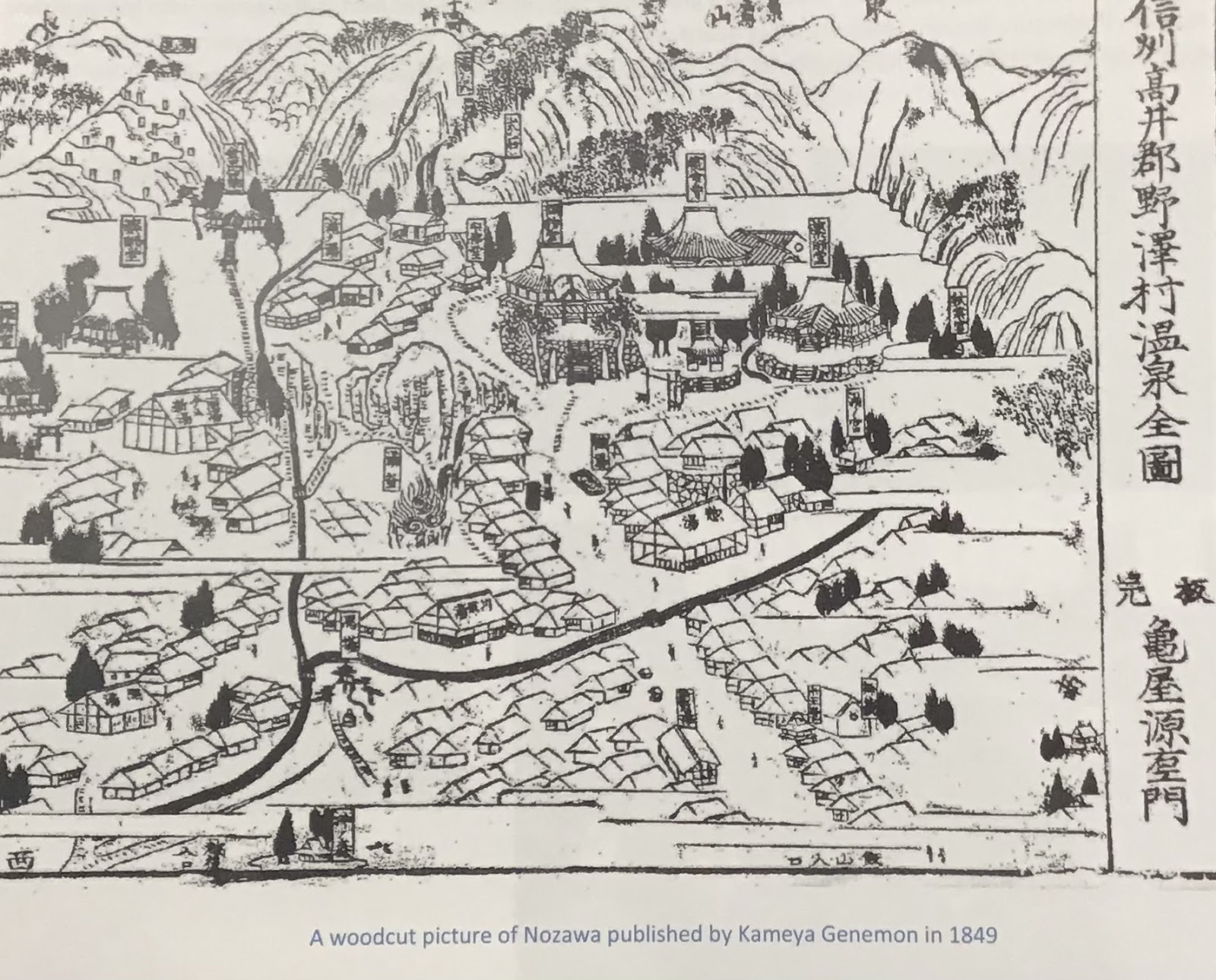
Onsens Protected by the Nozawa Group
Soon after the Meiji period began in 1868, the number of visitors between 1870 and 1872 increased to 7,000 to 8,000 per year, and in 1877 exceeded 10,000. New outdoor baths were opened: Asagama-no-yu in 1869 and Yokochi-no-yu in 1871.
However, in line with the development of new national schemes, arrangements were required for onsens that had been protected by the village since the Edo period to comply with the new scale of the village and with modern laws.
In order to keep the old Nozawa Village custom that "onsens belong to all villagers", the village created an autonomous group named "Nozawa-gumi" (Nozawa group). From this moment, the village’s role changed to that of an administrative organization, while the autonomous group "Nozawa-gumi" existed to protect the region, with a focus on the mountains, water and onsens of the village.
From the Reconstruction of Oyu
In 1888, when the wave of drastic changes of the Meiji Restoration began to settle, a large-scale reconstruction was carried out on Oyu to suit the new period, and a grand opening ceremony was held in November with the governor of Nagano Prefecture Kinashi Seiichiro. A big board with "lnukai-no-miyu" written on it by governor Kinashi was placed near the entrance. At the same time, Ogama was fortified around Yugama to ensure security.
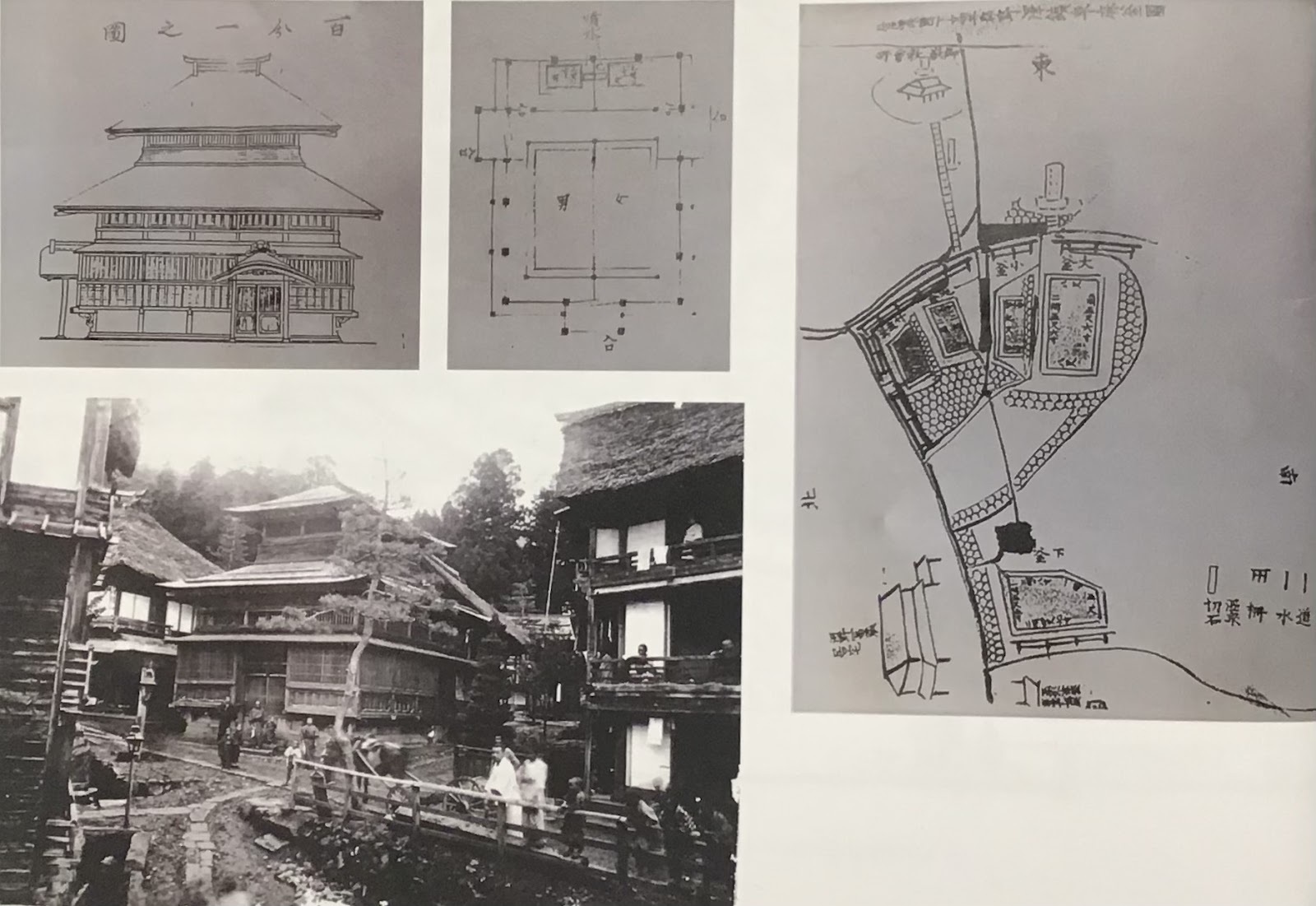
Changing Landscape of the Onsens
Roads were built to allow carriages and jinrikisha(rickshaws) to pass through.

Around 1901, many rooms and inns were also renovated. Booklets introducing Nozawaonsen were published, featuring beautiful views and English text.

The Era of Automobiles and Railroads
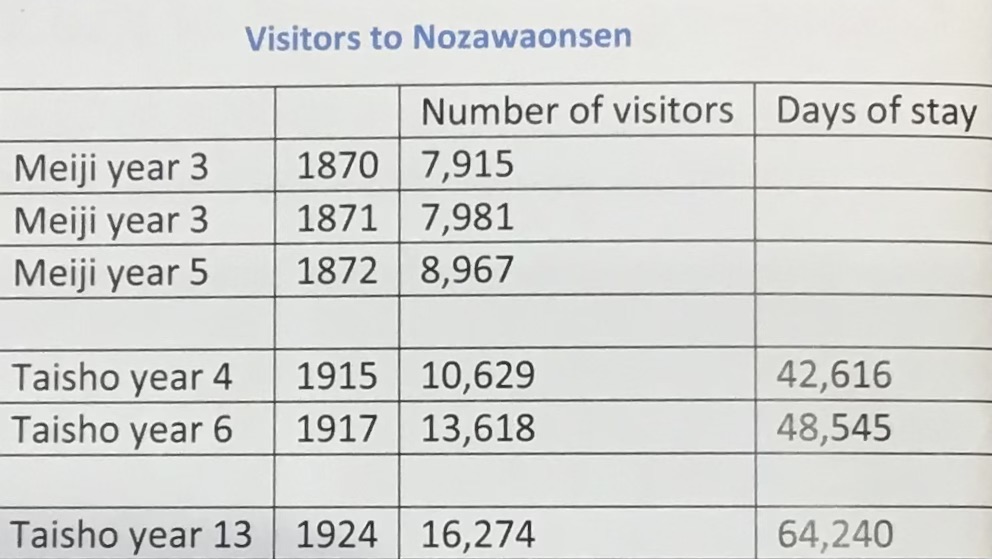
The era of automobiles and railroad transport arrived in the Taisho period, and access to Nozawaonsen became much easier.
The first automobiles traveled to Nozawa in 1920. Children often chased after them in awe.
In 1923, the liyama Railroad was extended to the Kuwanagawa, and a road going straight from Kamisakai Station to Nozawaonsen over the Chikuma River was opened.
The Kato line of Nagano Railroad was opened in 1924 connecting Yashiro and Kijima.
Many railroad line guide maps, pamphlets and postcards introducing Nozawaonsen began to be published.

Onsens and Yakushido
Yakushi Nyorai is said to be a Buddha that frees people from suffering, and is also called the "Healing Buddha," one of the Buddha triad along with Nikko Bodhisattva and Gakko Bodhisattva. Yakushi Nyorai is said to be protected by the Twelve Heavenly Generals.

Nozawa's onsens were deeply associated with healing diseases and soothing the mind and body, and were worshiped from ancient times.
Onsen Yakushido
The Onsen Yakushido was built approximately 350 years ago, thanks to a donation from the daimyo Matsudaira Totoumi-no-kami, according to legend. Due to a tragic fire it was completely destroyed in 1932, but restored in 1953, and has been protected by the Nozawa-gumi since.
The principal image, the flanking image and the Twelve Heavenly Generals made by Seiho Ouchi, a modern sculptor of Buddhist statues, attract the veneration of villagers as protectors of the onsens and village.
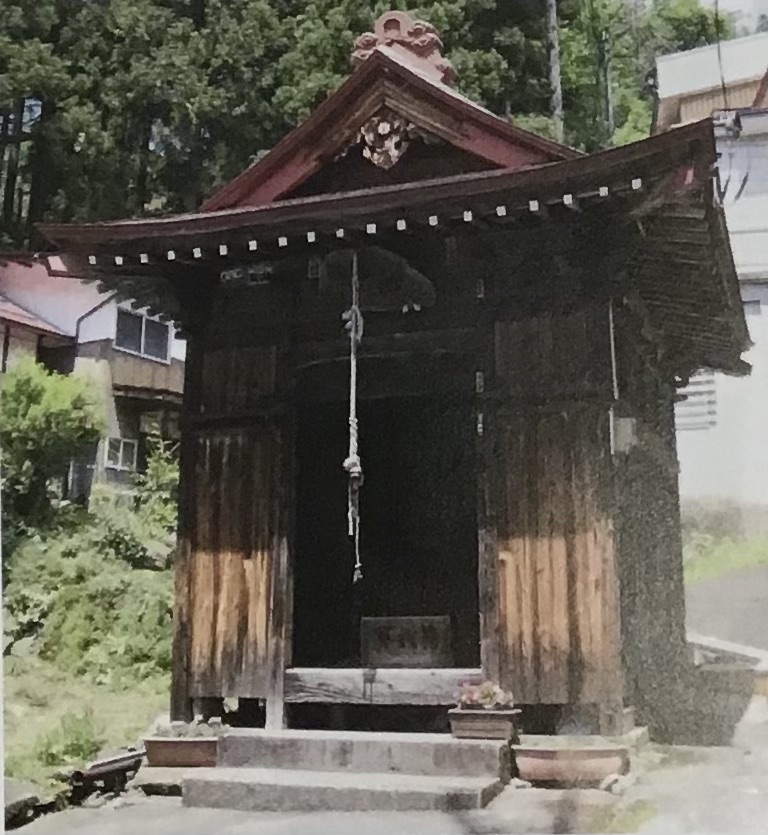
Yakushido - A bear Yakushi
This Yakushido was built in 1899 on the land with the source of Terayu water that, according to legend, was used by a bear to soothe its wound. Terayu is the oldest onsen among Nozawa's sotoyu (external onsens), together with Oyu and Kawarayu. There are records stating that the development of the palace and the zushi (miniature shrine with double doors) was assigned to a Buddhist sculptor, Shimizu Kazusuke of liyama City.
Asagama Yakushido(Genemon Yakushi)

The headman living in Terayu and Shinyu in the Edo period was named Genemon. Genemon worshiped a yashiki- Igami (enshrined god) in this Yakushido.
It was a house with strong faith, from the opening of Kamiterayu, and constructions of Konpiragu and Dosojin stone monuments, as well as the Hyakuban Kannan and Yakushido.

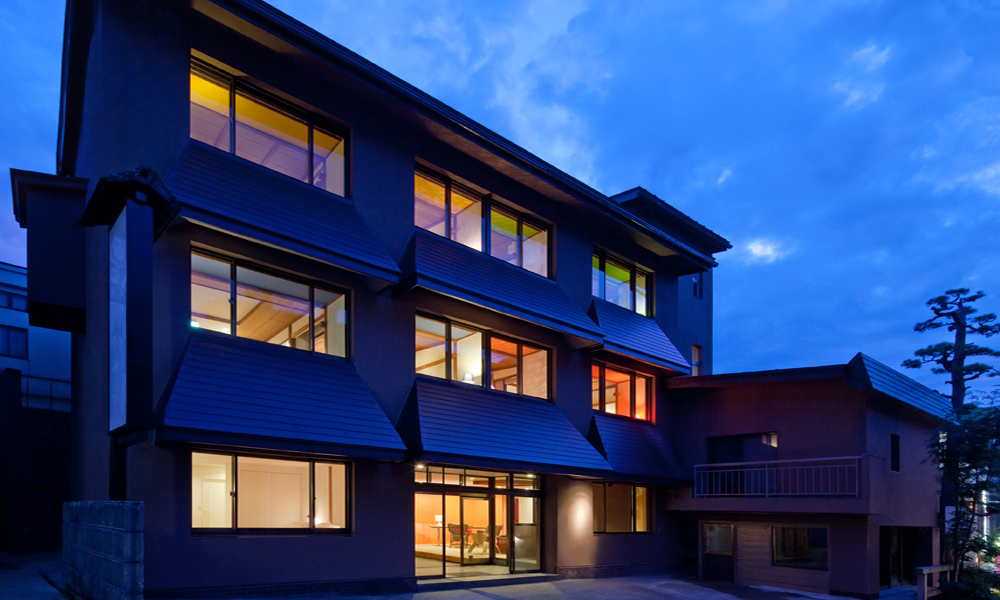












.png)

.png)















.png)











.jpg)
